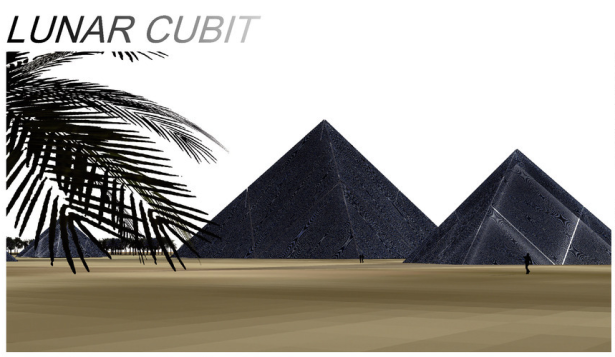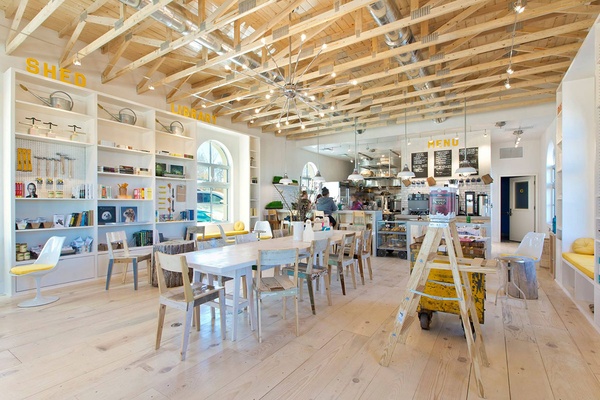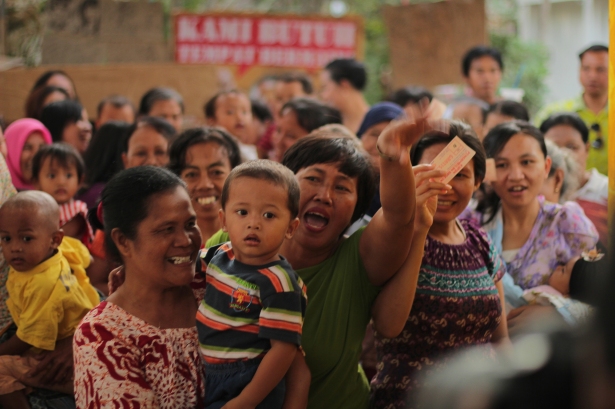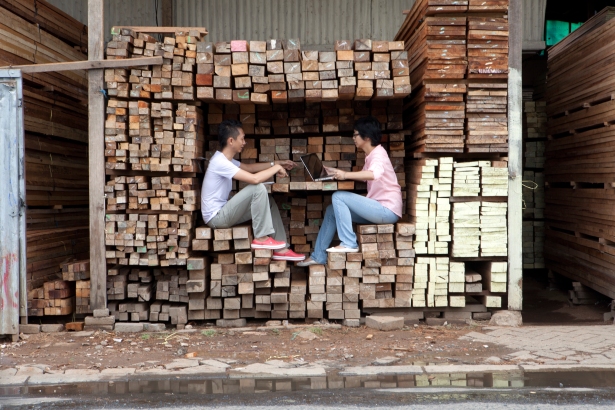This post comes from the Artists and Climate Change Blog
For me, it was love at first sight: “Renewable energy can be beautiful.â€
Back in 2013, when I first saw this trademarked tagline on the Land Art Generator Initiative (LAGI) website, I remember shouting out an involuntary “YES!†to my computer screen. I then copied these five words to a piece of paper and taped it to the filing cabinet next to my desk, where it continues to inspire me to this day.
Founded in 2009 by co-directors Elizabeth Monoian and Robert Ferry, LAGI is a bold multi-faceted, multidisciplinary global collaborative platform to accelerate the transition to post-carbon economies by challenging creatives – artists, architects, landscape architects, engineers and scientists – to design site-specific public art installations that generate carbon-neutral utility-scale clean electricity.
It is called “solutions based artâ€: part renewable power generators, part large-scale public art installations.

Lunar Cubit was the winning submission from the first LAGI competition in 2010, designed for Site #3 in Abu Dhabi near Masdar City. A simple, elegant design: nine pyramids made of solar panels.      Â
LAGI employs a variety of strategies to advance popular acceptance of clean energy infrastructure: commissions and requests for proposals (RFP), biennial competitions, educational material development, and facilitating participatory design processes within communities.
Of these, LAGI is best known for its free and open biennial competitions that have attracted, since 2010, nearly 1,000 proposals from over 60 countries. The power of the competition model, according to Mr. Ferry, “is that it allows people to be playful, innovative and creative, without the bounds of a specific client.â€
“The competition model encourages people to work collaboratively across many disciplines in order to imagine, which is of tremendous value in itself,†Mr. Ferry added.

A submission to the 2012 competition, Fresh Kills Coaster combines solar (purple panels) and kinetic energy (from human footsteps on the running track, created from repurposed running shoes). Â Â Â Â Â Â Â Â
No monotonous rows of solar PV panels or fields of spinning horizontal axis wind turbines here (ahem… which is exactly what I have spent the last decade photographing!) LAGI takes us in an entirely new direction that elevates clean energy infrastructure to the level of civic art and creative expression.
LAGI submissions are universally elegant, visionary, dazzling and yes, playful. In a word, awesome! Clicking through the design boards from each competition, I feel a rush of emotion: hope, optimism, confidence that the Holy Grail is finally within reach: a 100% clean energy economy in our lifetimes. LAGI shows us the way.

A whimsical submission to LAGI’s 2016 competition, Wake Up proposes to repurpose retired swan boats (keeping them out of the landfill) into wave generating converters to help power California’s iconic Santa Monica Pier.  Â
Here are links to each of the four LAGI competitions to date:
- 2010: Abu Dhabi and Dubai, UAE
- 2012: New York’s Fresh Kills Park, US
- 2014: Copenhagen, Denmark
- 2016: Santa Monica, California, US
I am particularly fond of the 2014 winning submission. Argentina-based designer Santiago Muros Cortés’ Solar Hourglass reminds us that “energy is just as precious and fleeting as time, and thus we should take care of it, appreciate it, not waste it.†This luminous hourglass – which doubles as a concentrated solar power station – sends “an optimistic message to those who visit it: that we still have time to make things right environmentally, that we are not beyond the point of no return… and most importantly, we don’t need to be.â€

The 1st place winner of the 2014 LAGI competition, Solar Hourglass, elegantly showcases concentrated solar power technology, designed to produce electricity for 1,000 homes in the Danish capital, Copenhagen.Â
The 2018 competition, to be announced soon, will coincide with LAGI’s 10-year anniversary. Reflecting on their first decade, Ms. Monoian credits a large part of LAGI’s success to early support from Abu Dhabi’s Masdar which was “absolutely critical at the beginning, and continues to be so today.â€
Looking forward to the next 10 years, Ms. Monoian says the biennial competitions “will continue as long as cities around the world keep approaching us,†but acknowledges, “It’s time to start implementing.â€
Which means that within a few years – around the same time that countries like Norway will have completely banned petrol powered cars and Sweden will have completely eliminated fossil fuel usage within its borders – clean power stations as tourist attractions will have become a reality. Here’s a great example as imagined by Munos Cortés:

This is heady stuff! We are living witnesses to the third energy revolution. It’s happening now, all around us. The tsunami has crested; it is irreversible. Creatives around the world should seize this moment to shift the global conversation from despair to optimism, from apathy to action. As Mr. Ferry emphasized, “Make your art social. Hit the streets. Find opportunities to collaborate. Bring it to solutions.â€
Through its website and multiple publications, LAGI provides a veritable goldmine of inspiration for urban planners/architects/engineers around the world to rethink our built environments in the context of climate change. More importantly, LAGI encourages us all to embrace utility-scale net-positive energy infrastructure as an integral and vibrant part of our commercial and residential centers.
When asked what is the single most important thing artists can do to address climate change, Ms. Monoian and Mr. Ferry answered simultaneously, in unison: Collaboration. “We are not equipped to work alone.†To create a livable, just world in this age of the Anthropocene, we must embrace the cross-disciplinary creative collaborative process that focuses on solutions. LAGI shows us the way.
Addendum: To the best of my knowledge, there is no other site on the Internet where one can find, all in one place, nearly 1,000 stunningly beautiful and replicable infrastructural solutions to climate change. Collectively, they help us visualize the beauty and promise of our post-carbon future. To quote futurist Alex Steffen, “We can’t build what we can’t imagine.â€
Follow Joan Sullivan on Twitter @CleanNergyPhoto
Artists and Climate Change is a blog that tracks artistic responses from all disciplines to the problem of climate change. It is both a study about what is being done, and a resource for anyone interested in the subject. Art has the power to reframe the conversation about our environmental crisis so it is inclusive, constructive, and conducive to action. Art can, and should, shape our values and behavior so we are better equipped to face the formidable challenge in front of us.
Go to the Artists and Climate Change Blog

























